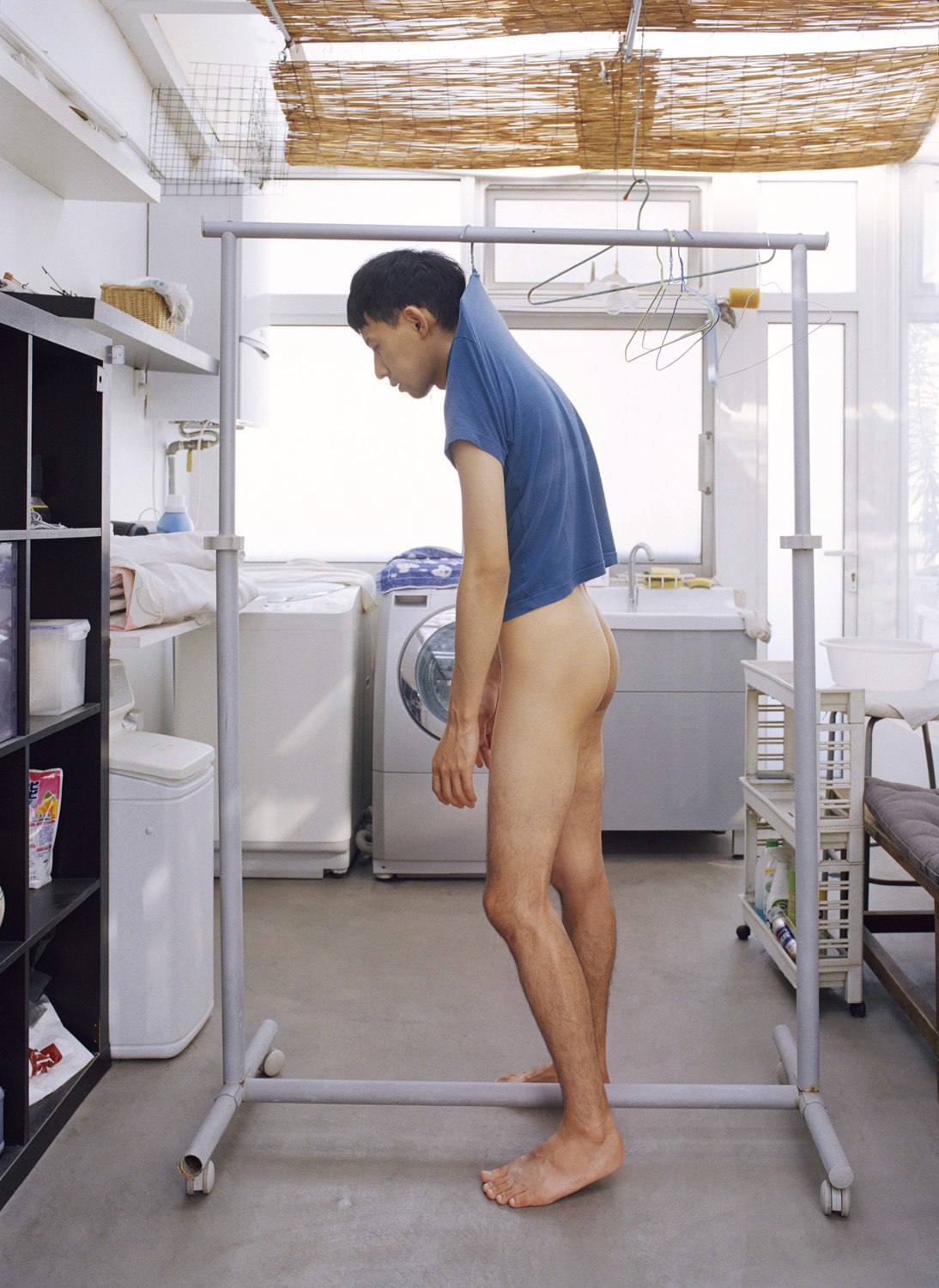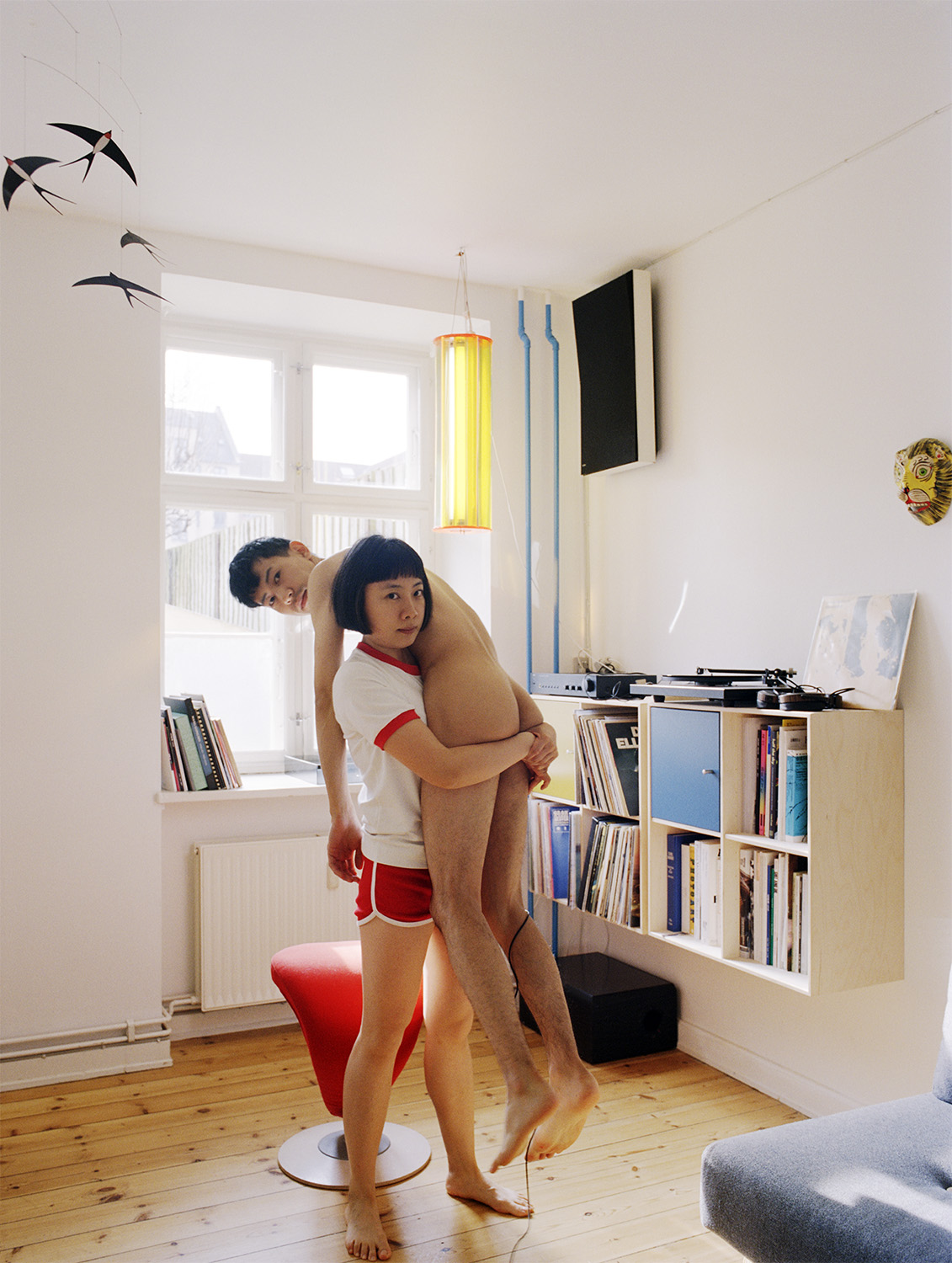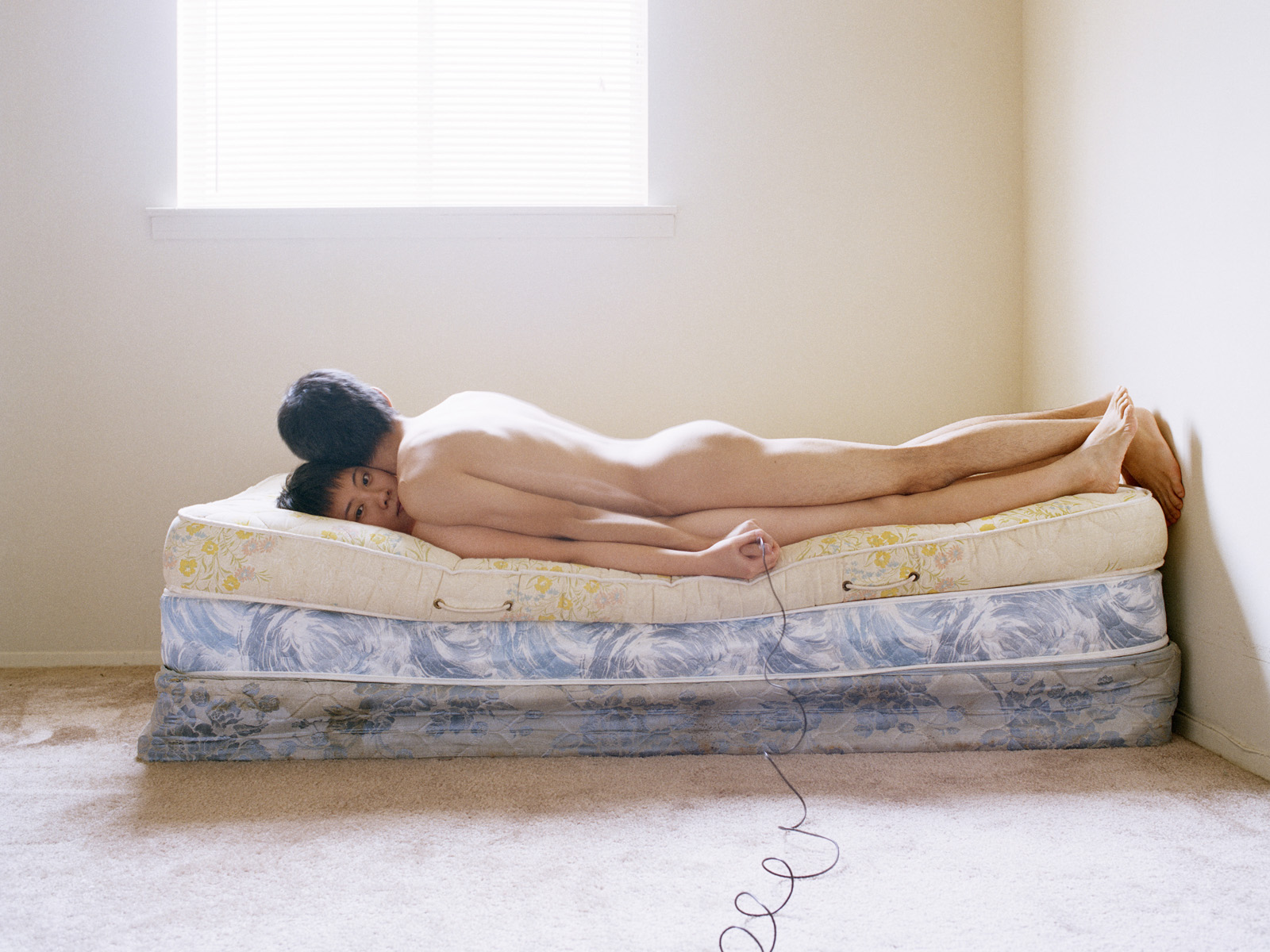Pixy Liao
Pixy Liao is a Chinese photographer whose work directly challenges gender roles in photography and society. Liao’s images attack the typical set up of a man capturing a female, playing with standard expectations as she makes her Japanese boyfriend Moro and their relationship the subject of her lens.
In bodies of work such as Experimental Relationship (2007 – now) Liao explores their connection through film photographs. Relationships as a topic for artistic expression is nothing new, but Liao’s approach is unusual, striking, and ultimately a lesson in modern intimacy.
Liao acknowledges that as a Chinese woman she had expected to enter a relationship with an older man who would act as a “protector and mentor”. But her relationship with Moro, a man who is five years younger than her, gave her feelings of “authority and power”.
This was the catalyst for her experiment, and the resulting images strongly reflect the “power” she admits to feeling. One image features a lone Moro standing in profile under a clothes rail, wearing just a t-shirt which is caught on a hanger on the rail. Hooked and with his face turned away from the camera, you are aware of the other half of his relationship, behind the camera, in control.

© Pixy Liao
But rather than keeping him in the passive roles of both the younger person and model for the photographer, Liao doesn’t merely reverse the learned roles of society, and often joins him in front of the camera. This allows the relationship’s complex dynamics to reveal themselves through the body of images which work together to unravel the narrative of the pairing’s interaction.
When she features, Liao remains the director with the camera’s shutter release in her hand. One image shows Liao standing, clothed, lifting a naked Moro. She puts herself in the role expected of a man in heteronormative relationship, while Moro, naked and exposed, takes on that typically expected of a woman. The wire of the shutter release snakes around Moro’s calf, recalls rope and binding, and further underlines the dominating position that Liao as photographer holds.
Yet as both stare directly at the camera, with the same neutral expressions that are somewhat defiant, another level of their relationship is revealed. There is a playfulness to the image, and a sense that the control Liao yields here is not resolute, but shared.
Staged, Liao’s images happily defy the expectations of the ‘candid’ photographs of lovers, and lie closer to the selfie culture of today. But they manage to embody far more intimacy and surprise than the typical posed selfie. The scenes might confront us with expectations of social media, but deviate from the formula forcing us to question what intimacy really is.
An image that shows Pixy eating papaya from her boyfriend’s naked body not only recalls couple photos, but ‘food porn’ images that dominate our online feeds. But while the scene is reminiscent of these photographs, as Moro lies prostrate across the kitchen table with a fruit recalling female anatomy lying in his crotch, the strangeness of what is presented makes us question the reality of relationships and how we portray them.
Liao is not committed to domination in her portrayal of Moro, and in several images she allows him to take the position of control as he lies on top of her. But the balance is perhaps most clear when Moro holds the shutter release himself and shares in the role of photographer. Liao may be in control of the scene, but her images don’t seek to control the narrative. Instead Liao’s photographs act as a testing ground for male-female love, and a way for Liao to expose the varying truths of what being a woman is.














